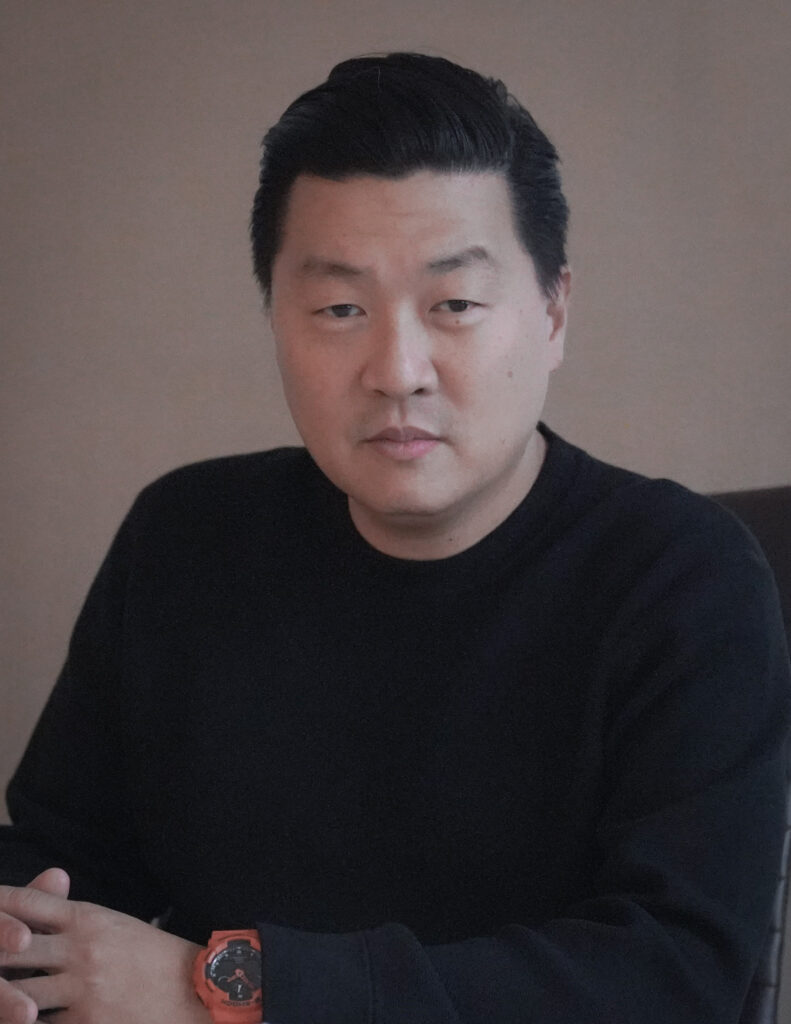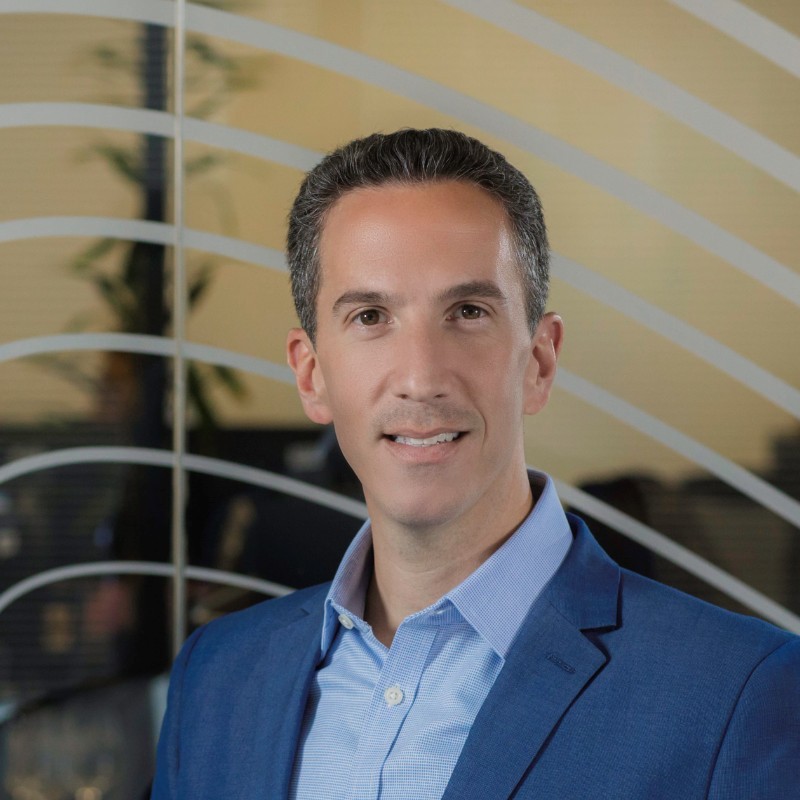Looking back over my decade-plus covering fintech, I see parallels between earned wage access (EWA) today and the past paths of equity crowdfunding, peer-to-peer lending and BNPL. Others in the industry do, too.
In broad strokes, entrepreneurs use new(ish) technology to create a novel solution to an existing problem or to refresh an old idea by delivering it in a modern fashion. A decade ago, it was crowdfunding and peer-to-peer lending. Over time, BNPL and money transfers joined the list.
With the gift of a decade’s reflection, I’ve seen some commonalities as these concepts evolve. Companies enter the space, promising a new and exciting way of raising capital, investing, or offering novel credit services. They are of varying quality; some have extremely well-developed business plans with built-in contingencies to address possible regulations and changing market conditions. Their founders can quickly answer questions on these and other topics without breaking a sweat. They’re in it for the long haul.
Others ride the wave. They take an old concept, slap a new label on it, and try to sell it to venture capitalists and the public. Sometimes it works. It’s easy to distinguish the founders of such companies. They give thin or evasive answers to questions about long-range plans and regulations. They’re already planning their exit.
There is always a division within the more serious group. Some companies charge out of the gate, establish an MVP and assertively pursue their vision. Their approach to regulation is opaque. A few seem intent on establishing a market foothold before regulators act, hoping their imprint influences any laws enacted. Others question the need for regulation at all or believe existing laws don’t apply.
Over time, one learns of companies that are much more deliberate. They may take longer to emerge from stealth, as they consider various areas of legislation and how they could affect their plans over the long term. Executives build bridges with regulators, often hire experienced personnel, and spend fortunes on legal and compliance experts.
The longer EWA path may actually be shorter
Nico Simko took the longer path. The founder of Clair, a digital banking app connected to payroll, time, and attendance systems, Simko assumed earned wage access would be considered a loan and designed the company accordingly. His personal feelings were irrelevant.


That meant a lot more work at the beginning. Clair spent heavily on compliance; 10% of staff focused solely on that. States understand lending, so if a company obtains a lending license, it is on solid footing. Clair partnered with a national bank to provide the “loans.”
It took Clair three years and additional capital to get here, but Simko said it is the healthier option in the long term.
“As much as we want fintech to be fast and break things, you don’t have to go too fast,” Simko said. “Breaking things kills you.
“I want to do the right thing by consumers. What’s the big deal with calling this a loan? It’s not that hard. You just click a box, and you get your licenses.”
Is EWA a loan? Does it matter?
Is EWA a loan or not? It’s an interesting philosophical question, but who has time to debate it? For Clair, assuming EWA is a loan added to the timeline at the beginning, but it’s saving business development time today.
Little clarification has been provided in those three years, anyway. EWA brings added complexity because there are several varieties. Some charge fees and others are free to consumers. Some are direct-to-consumer, while others are offered through employers. Each must be considered on its own. According to Simko, such a climate benefits a conservative approach.
In closing, Simko reiterated that his thoughts don’t matter much in the big (regulatory) picture.
“I don’t personally care whether this is a loan or not. What I care about is removing regulatory uncertainty. It’s all about what will decrease uncertainty and complications for users and make the product easier to understand.
“Right now, going through the loan route and a bank partnership, it’s more successful.”
How data will drive an EWA mindshift
Jason Lee wants to see shifts in how society views accumulated wages. When does ownership over those funds shift from the employer to the employee? In a popular essay for Fintech Nexus, Lee, the founder of DailyPay and Salt Labs, believes regulators will come to see earned wages as the employee’s funds.
Technology will help. DailyPay leveraged system interoperability to create Pay Balance, a feature that accurately reflects an employee’s earnings. Pay Balance correlates unstructured data from multiple employer databases – hours, rates, taxes and deductions – into a coherent whole.


Make sense of the relevant data, and earned wage access becomes possible. Lee likened it to his son’s Lego. It’s in pieces across the floor but can be brought together to build a car.
That interoperability allows the financial services industry to replace an outdated assumption with a new one. If Grandma, who banks with Chase, sends you birthday money and you deposit it in your Citibank account, a series of assumptions occur. You get access to the money before the bank receives it because Citibank assumes it will come from Chase, as it has billions of times before. Settlement can occur later.
If we can be confident that money will come from Chase to Citibank, why can’t we assume it will flow from employer to employee?
“If you believe that’s what we’ve created, then the act of taking money out of that pay balance is no more interesting than taking Grandma’s $100 out of your checking account,” Lee said.
The BNPL/EWA parallel
Like Simko, Lee doesn’t expect everyone to see it like him. Assume the worst; don’t hope for the best.
“The industry needs to assume that there will be some state regulator who says this is a loan,” Lee said.
Lee explained that historically, regulation follows seven to 10 years after a new industry emerges. As it grows, the regulator will act (“often late, always on time”). They will put you in a box.
Look to BNPL for an example. When the current iteration began, some providers tried to frame it as seller financing, with fintechs assisting. Seller financing is nothing new. Intermediaries making it happen for a fee is.
“Here’s a very important difference,” Lee cautioned. “When an individual or unique company makes that part of the equation their business model, that is what gets the regulator’s attention. If GE is doing it, that’s fine, because they’re in the business of retail and selling you appliances. It’s when Sezzle decided to make that piece their business. That’s what draws the attention of the regulator.”
Lee uses Wayne Gretzky’s quote on skating to where the puck is going. EWA companies are wise to do the same thing, regardless of their philosophical bent.
“I don’t believe it’s a loan, but that doesn’t matter how you operate,” Lee said. “I don’t think my house will burn down tomorrow, but that doesn’t mean I don’t buy fire insurance.”
American Fintech Council: Advocating for appropriate standards
American Fintech Council (AFC) CEO Phil Goldfeder said EWA advocacy is among his most challenging tasks due to those several different business models. Over the past many months, he’s kept busy meeting with state legislators to advocate for appropriate EWA laws. A critical part of those meetings is explaining those differences while stressing the importance of effective legislation.
Goldfeder wants to prove to legislators that the EWA industry, most of whom are AFC members, are rowing in the same direction. As proof, AFC members adhere to a series of standards, including fee disclosures, offering a no-cost option, and not allowing workers to draw more wages than they’ve accumulated. Customers must be allowed to cancel at any time.
Those standards lend credibility. They helped with the CFPB when the AFC advocated for BNPL. Once the CFPB weighs in, it will lend much-needed structure to the discussion.
“Federal strategy is always our top priority,” Goldfeder explained. “If we can get the CFPB to look at this holistically like their last advisory opinion in 2020… That was great for the industry; it provided significant clarity. If the CFPB does that, I think a lot of states take their hands off and say, ‘Great, there is clarity for how this should be regulated and how (EWA) should be operated’.”
“You take the good, you take the bad…”
Until then, there are 50 states, each doing its own thing. Missouri, Nevada, Wisconsin, and Kansas have acted. A few more will join them by 2025.


However, for every one of those, there must be a Connecticut that treats EWA as a loan.
“In the interest of consumer protection, they’re screwing them over,” Goldfeder said. “ It’s lazy regulating and legislating; it’s easier to call it a loan.
“This is a new product that requires a new regulatory structure. States like Nevada, Missouri, Wisconsin, Kansas, Massachusetts, California and New York recognize that and are working to create new rules and regulations specifically designed around EWA.”
On the flip side, states like Connecticut are cutting off their consumer access, he added. That will drive them to high-cost credit cards and predatory lenders.
“Connecticut, in the name of consumer protections, has forced consumers to use more to take on more debt,” Goldfeder said.
Does it matter where the money comes from, especially when no interest is charged, and it does not affect a credit score? Why should the employer hold earned money if the employee wants to access it?
“It’s a great product, and that’s a good thing,” Goldfeder concluded. “And yet (some) regulators… I love saying that in the interest of consumer protection, they’re screwing everyone. You are mandated to protect the consumers, and you’re not doing it.”
EWA works as intended
One early piece of research supports EWA. In November 2023, the Financial Health Network released the results of conversations with 21 EWA users. The goal was to identify themes of use and overall opinions.
EWA worked the way responsible providers intended. Participants used it to pay bills on time and to cover unexpected expenses. For most, their first experience using EWA was to pay a medical expense or a car repair.
It is preferable to payday loans, late fees, overdrafts or borrowing from friends and family.
“Some users also felt these alternatives carried a social stigma, while EWA did not,” the report states. “Using EWA allowed users to access the liquidity they needed while still preserving their sense of dignity.
“Further, nearly all participants in our study did not view EWA as the same or akin to loans, instead asserting that EWA provided wages they had already earned, which was fundamentally different from borrowing against future earnings.”
.pp-multiple-authors-boxes-wrapper.box-post-id-45383.pp-multiple-authors-layout-boxed.multiple-authors-target-shortcode.box-instance-id-1 .box-header-title { font-size: 20px !important; } .pp-multiple-authors-boxes-wrapper.box-post-id-45383.pp-multiple-authors-layout-boxed.multiple-authors-target-shortcode.box-instance-id-1 .box-header-title { font-weight: bold !important; } .pp-multiple-authors-boxes-wrapper.box-post-id-45383.pp-multiple-authors-layout-boxed.multiple-authors-target-shortcode.box-instance-id-1 .box-header-title { color: #000000 !important; } .pp-multiple-authors-boxes-wrapper.box-post-id-45383.pp-multiple-authors-layout-boxed.multiple-authors-target-shortcode.box-instance-id-1 .pp-author-boxes-avatar img { border-style: none !important; } .pp-multiple-authors-boxes-wrapper.box-post-id-45383.pp-multiple-authors-layout-boxed.multiple-authors-target-shortcode.box-instance-id-1 .pp-author-boxes-avatar img { border-radius: 5% !important; } .pp-multiple-authors-boxes-wrapper.box-post-id-45383.pp-multiple-authors-layout-boxed.multiple-authors-target-shortcode.box-instance-id-1 .pp-author-boxes-name a { font-size: 24px !important; } .pp-multiple-authors-boxes-wrapper.box-post-id-45383.pp-multiple-authors-layout-boxed.multiple-authors-target-shortcode.box-instance-id-1 .pp-author-boxes-name a { font-weight: bold !important; } .pp-multiple-authors-boxes-wrapper.box-post-id-45383.pp-multiple-authors-layout-boxed.multiple-authors-target-shortcode.box-instance-id-1 .pp-author-boxes-name a { color: #000000 !important; } .pp-multiple-authors-boxes-wrapper.box-post-id-45383.pp-multiple-authors-layout-boxed.multiple-authors-target-shortcode.box-instance-id-1 .pp-author-boxes-description { font-style: none !important; } .pp-multiple-authors-boxes-wrapper.box-post-id-45383.pp-multiple-authors-layout-boxed.multiple-authors-target-shortcode.box-instance-id-1 .pp-author-boxes-description { text-align: left !important; } .pp-multiple-authors-boxes-wrapper.box-post-id-45383.pp-multiple-authors-layout-boxed.multiple-authors-target-shortcode.box-instance-id-1 .pp-author-boxes-meta a span { font-size: 20px !important; } .pp-multiple-authors-boxes-wrapper.box-post-id-45383.pp-multiple-authors-layout-boxed.multiple-authors-target-shortcode.box-instance-id-1 .pp-author-boxes-meta a span { font-weight: normal !important; } .pp-multiple-authors-boxes-wrapper.box-post-id-45383.pp-multiple-authors-layout-boxed.multiple-authors-target-shortcode.box-instance-id-1 .pp-author-boxes-meta { text-align: left !important; } .pp-multiple-authors-boxes-wrapper.box-post-id-45383.pp-multiple-authors-layout-boxed.multiple-authors-target-shortcode.box-instance-id-1 .pp-author-boxes-meta a { background-color: #6adc21 !important; } .pp-multiple-authors-boxes-wrapper.box-post-id-45383.pp-multiple-authors-layout-boxed.multiple-authors-target-shortcode.box-instance-id-1 .pp-author-boxes-meta a { color: #ffffff !important; } .pp-multiple-authors-boxes-wrapper.box-post-id-45383.pp-multiple-authors-layout-boxed.multiple-authors-target-shortcode.box-instance-id-1 .pp-author-boxes-meta a:hover { color: #ffffff !important; } .pp-multiple-authors-boxes-wrapper.box-post-id-45383.pp-multiple-authors-layout-boxed.multiple-authors-target-shortcode.box-instance-id-1 .ppma-author-user_url-profile-data { color: #6adc21 !important; } .pp-multiple-authors-boxes-wrapper.box-post-id-45383.pp-multiple-authors-layout-boxed.multiple-authors-target-shortcode.box-instance-id-1 .ppma-author-twitter-profile-data span, .pp-multiple-authors-boxes-wrapper.box-post-id-45383.pp-multiple-authors-layout-boxed.multiple-authors-target-shortcode.box-instance-id-1 .ppma-author-twitter-profile-data i { font-size: 16px !important; } .pp-multiple-authors-boxes-wrapper.box-post-id-45383.pp-multiple-authors-layout-boxed.multiple-authors-target-shortcode.box-instance-id-1 .ppma-author-twitter-profile-data { background-color: #6adc21 !important; } .pp-multiple-authors-boxes-wrapper.box-post-id-45383.pp-multiple-authors-layout-boxed.multiple-authors-target-shortcode.box-instance-id-1 .ppma-author-twitter-profile-data { border-radius: 50% !important; } .pp-multiple-authors-boxes-wrapper.box-post-id-45383.pp-multiple-authors-layout-boxed.multiple-authors-target-shortcode.box-instance-id-1 .ppma-author-twitter-profile-data { text-align: center !important; } .pp-multiple-authors-boxes-wrapper.box-post-id-45383.pp-multiple-authors-layout-boxed.multiple-authors-target-shortcode.box-instance-id-1 .ppma-author-linkedin-profile-data span, .pp-multiple-authors-boxes-wrapper.box-post-id-45383.pp-multiple-authors-layout-boxed.multiple-authors-target-shortcode.box-instance-id-1 .ppma-author-linkedin-profile-data i { font-size: 16px !important; } .pp-multiple-authors-boxes-wrapper.box-post-id-45383.pp-multiple-authors-layout-boxed.multiple-authors-target-shortcode.box-instance-id-1 .ppma-author-linkedin-profile-data { background-color: #6adc21 !important; } .pp-multiple-authors-boxes-wrapper.box-post-id-45383.pp-multiple-authors-layout-boxed.multiple-authors-target-shortcode.box-instance-id-1 .ppma-author-linkedin-profile-data { border-radius: 50% !important; } .pp-multiple-authors-boxes-wrapper.box-post-id-45383.pp-multiple-authors-layout-boxed.multiple-authors-target-shortcode.box-instance-id-1 .pp-author-boxes-recent-posts-title { border-bottom-style: dotted !important; } .pp-multiple-authors-boxes-wrapper.box-post-id-45383.pp-multiple-authors-layout-boxed.multiple-authors-target-shortcode.box-instance-id-1 .pp-multiple-authors-boxes-li { border-style: solid !important; } .pp-multiple-authors-boxes-wrapper.box-post-id-45383.pp-multiple-authors-layout-boxed.multiple-authors-target-shortcode.box-instance-id-1 .pp-multiple-authors-boxes-li { color: #3c434a !important; }
- SEO Powered Content & PR Distribution. Get Amplified Today.
- PlatoData.Network Vertical Generative Ai. Empower Yourself. Access Here.
- PlatoAiStream. Web3 Intelligence. Knowledge Amplified. Access Here.
- PlatoESG. Carbon, CleanTech, Energy, Environment, Solar, Waste Management. Access Here.
- PlatoHealth. Biotech and Clinical Trials Intelligence. Access Here.
- Source: https://www.fintechnexus.com/assume-ewa-is-a-loan/



